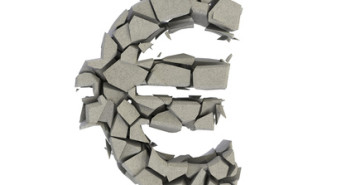A quiet start to the week from an economic release standpoint fails to highlight the shifting tectonic plates changing the landscape in foreign exchange markets, with the greenback re-asserting its dominance that has been evident since the middle of last year. The divergence in monetary policy between the Federal Reserve and the European Central Bank is continuing to widen, with speculation intensifying that the ECB meeting on January 22nd will be when the Governing Council announces a sovereign bond purchase program in order to juice the monetary policy transmission mechanism and combat the threat of a prolonged bout of outright deflation. Rumors that the Governing Council is closer to defining the modalities of a sovereign bond purchase program has capped the euro’s recovery efforts for the time being, with EURUSD slinking back to pivot around the 1.18 handle.
Reports have highlighted the ECB’s QE program would be established on paid-in-capital from the national central banks, and that the amount of a country’s sovereign debt the ECB purchases would be based on those yearly contributions. Adding fuel to the fire was Council member Ignazio Visco who commented that the risk of deflation in the euro zone should not be underestimated, and implored the ECB to institute a sovereign bond purchase program. With the rhetoric surrounding a QE program from the ECB heating up, foreign exchange markets are heavily tilting the scales in favour of further monetary stimulus, and thus the short-euro trade is becoming quite crowded.
Accordingly, the most recent COT report from the CFTC illustrated that sentiment towards the euro declined for a third consecutive week, with speculative positioning increasing their bearish bets to a net short position of $23.9bn. While the net short position is shy of the $28.1bn registered in November, the non-commercial traders are continuing to add to their short conviction as accelerated pace, and should the ECB not deliver the implementation of a sovereign bond purchase program at their next meeting, the lofty bearish position is susceptible to a short-covering cull.
The shine of the big dollar to start the week has also been a by-product of a renewed flush in the hydrocarbon complex, with the front month WTI contract testing multi-year lows as it sinks back to the $47/barrel level. The bout of weakness in energy was spurred by Goldman Sachs slashing their crude forecasts over the next year, reducing their 6 and 12 month targets to $39/barrel and $65/barrel respectively, down from previous estimates of $75/barrel and $80/barrel. While equity futures have been unaffected by the decimation of the bid-side of the WTI book, and are flashing strongly green on the ECB developments, the loonie is taking it on the chin along with the other commodity-linked currencies as USDCAD flirts with the 1.19 handle ahead of the opening bell. There is little in the way of economic data to parse through during the North American session, though the release of Chinese trade balance figures that are due overnight will be a key focus for export-intensive currencies like the aussie and loonie, with a strong report helping to ease some of the pressure levied on the aforementioned currencies due to oil acting as an anchor.
Further reading:
USDCAD
EURUSD



